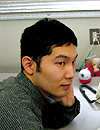The computing power of the supercomputer has increased at an astonishing pace - a factor of ten every four years1. At present, in November of 2007, the computing power of the fastest supercomputer in the world is about 0.5 PFLOPS2, so it is just a matter of time before a computer with a power of 10 PFLOPS is developed. The desktop computer I'm typing this on is about 2 or 3 GFLOPS, so the next generation of supercomputers will be about a million times faster.
What about the human brain? Inventor and futurist Raymond Kurzweil speculates that the human brain has a power of about 10 PFLOPS3. This number is an estimate based on a frequency range of neurons of 200 Hz, with each neuron a computing element with about 1,000 effective synaptic inputs, and a total of about one hundred billion cells. If this estimate is correct, in the near future the computing power of the supercomputer will overtake that of the human brain. However, if we ask whether the supercomputer will have equivalent processing power to the human brain, the answer is "no". In order to completely recreate human brain functions on a computer, it is necessary to construct a brain emulator4. Will we be able to create a brain emulator in the near future?
Nintendo Entertainment System (NES) aka "Famicon", which gave birth to many classic video games, had a clock speed of 2 MHz and an eight-bit microprocessor. Production stopped some years ago, but it is now possible to almost perfectly emulate the system on a home PC5 and enjoy such classic games as "XEVIOUS"6 and "Adventure Island"7. The reason that it is possible to emulate microprocessors like this is that we clearly understand how the microprocessor's functions are represented. Therefore, in order to re-create the microprocessor, we only need to re-create the numerical values stored in the registers and memory, and we do not need to compute the behaviour of each electron in the semiconductor elements.
This presents a dilemma for present-day neuroscience. We do not know how much of the functionality of cells needs to be simulated in detail in order to recreate brain functions. Do we need to think about not only synaptic receptors but also non-synaptic receptors? Do the non-firing glial cells need to be represented? How much of the electrical activity, and of what part of the brain, is necessary? In order to emulate the human brain with a model of the nervous system which includes the movements of ions and proteins, a supercomputer of astronomical computing power is required. In order to be ready for the coming of the era of the General Purpose Petaflops Supercomputer, we need to think about how to represent the functions of neural circuits. While I am anxious about vagueness of problem settings in neuroscience, I feel excited about the fusion of neuroscience and computer science, as I think about the astonishing development of computational power.






